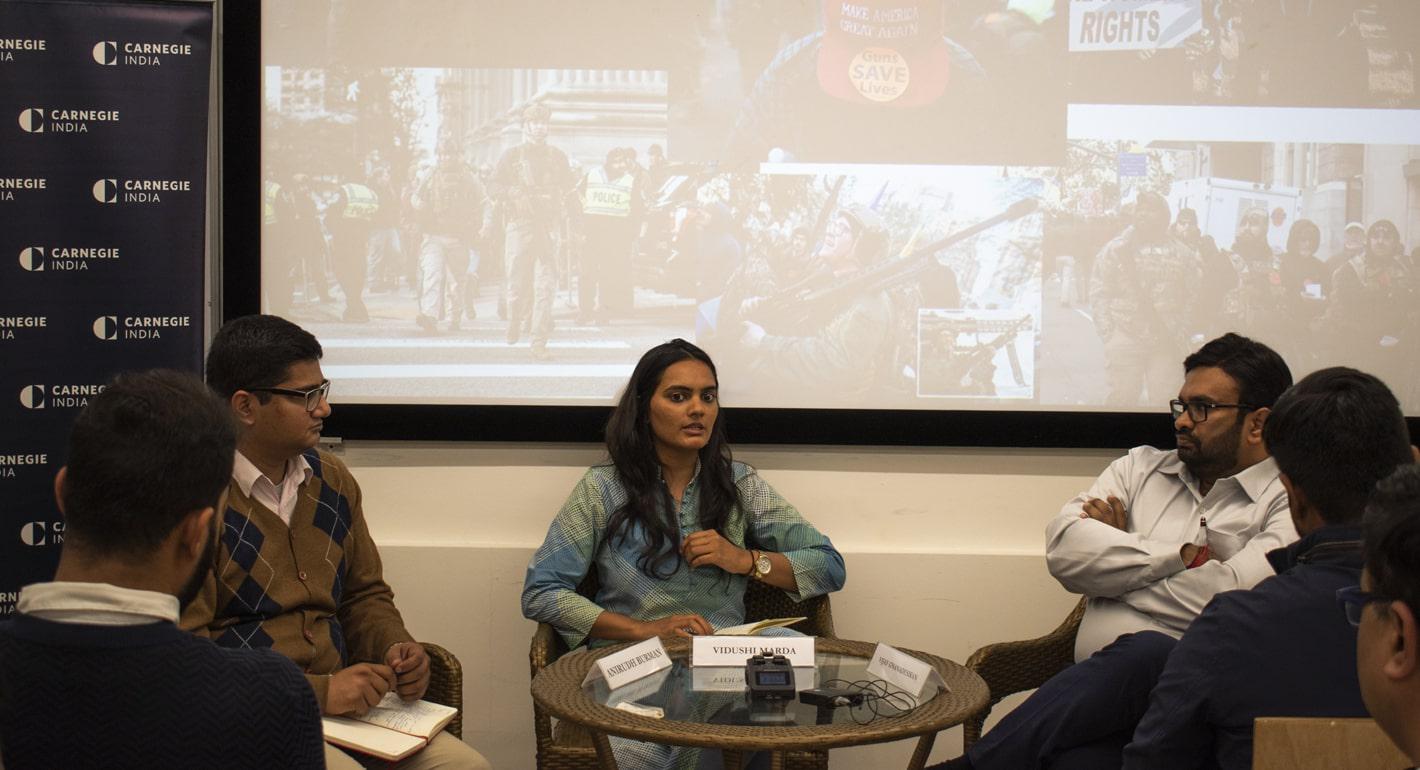Registration
You will receive an email confirming your registration.
KnowledgeTransfer@CarnegieIndia is an initiative that aims to provide a platform to facilitate the genuine exchange of ideas and knowledge among students, practitioners, subject-matter experts, and other interested audiences.
Facial recognition is a technology, based on artificial intelligence (AI), that leverages biometric data to identify a person based on their facial patterns. In recent months, the Indian government has started employing this technology to enhance law enforcement capabilities. In the long-term, it plans to build a nation-wide Automated Facial Recognition System (AFRS) to modernize the process for criminal identification and verification by various police organizations across the country. However, this technology raises several privacy and security concerns.
This workshop discussed the facial recognition technology, its applications, risks, and best practices.
Discussion Highlights
- What is Facial Recognition: Participants explained facial recognition as a technology used to analyze human faces for the purposes of ‘verification’ and ‘identification’ of individuals. It is based on the application of Machine Learning (ML), which is the most common technique of A.I., they noted. Participants highlighted that facial recognition involves a biometric mapping of an individual’s face; it is deeply dependant on iris scans and fingerprints. They illustrated the two types of facial recognition: one-on-one verification and one to many identification. The first, one-on-one recognition is when a dataset already has an individual’s face stored and the individual provides a photo of themselves to corroborate the data, like facial recognition features on a smartphone. Second, one to many identification is when an individual’s photo is taken and matched against an existing, often arbitrary, database in order to identify the person. Participants further stated that this arbitrary form of identification has led to many privacy and rights-based concerns around facial recognition.
- Emergence of Facial Recognition in India: Participants stated that facial recognition in the past two years has become an area of significant interest to the Indian government and judiciary, but there continues to be limited understanding and study of what it actually entails. Participants added that many states like Delhi and Telangana have started using facial recognition to monitor the public during protests, rallies, and other forms of public gatherings. Participants highlighted that AFRS, the largest facial recognition system in the world, has been proposed by the Indian government for all Police forces across the country. This will equip all police stations across the country with real-time capacity to identify criminals and initiate an instant exchange of this information between police stations. Participants noted that other Indian sectors, such as the railway sector, have also announced that they will use facial recognition to enhance safety.
- Benefits of Facial Recognition: Participants highlighted the benefits of facial recognition, ranging from its ability to help in finding missing children, in identifying criminals, ensuring safety in a public spaces, preventing human trafficking, and general maintenance of law and order. Participants added that specifically in the case of finding missing children and preventing human trafficking, facial recognition provides an unparalleled opportunity to tackle this issue. For India specifically, participants reflected on examples from Chennai and Nepal to show how facial recognition has played a critical role in finding missing children, preventing human trafficking, and curbing crime.
- Drawbacks of Facial Recognition: While facial recognition has various benefits, participants also stated that these benefits do not always stand the scrutiny of hard data and that the accuracy of the facial recognition software is questionable. Participants provided the example of when the Delhi Police applied the facial recognition technology to find missing children, the success rate was less than 1 percent. In addition, the technology could not even differentiate between genders. Participants further declared that the technology suffers from ethnic and racial biases globally. Another drawback, they highlighted, was the open collection of private data that the technology propagates without putting in place adequate safeguards for individual privacy. As a consequence, participants stated, the technology infringes upon an individual’s fundamental rights.
- Finding the Balance: In comparing the merits and demerits of the technology, participants assessed that the current application of facial recognition for public services does raise reasonable questions and concerns about privacy and rights. However, participants concluded, given this technology’s potential to solve problems, if applied properly in specific cases and contexts and with proper regulatory mechanisms, it could be leveraged in a beneficial manner.
This event summary was prepared by Suchet Vir Singh, a research intern at Carnegie India.
